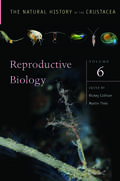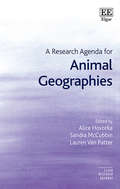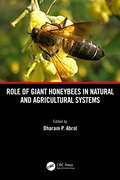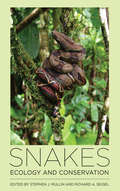- Table View
- List View
Rattlesnake (UEB Contracted)
This image shows a rattlesnake viewed from above. There is a locator dot shown, which will be at the top left of the page when the image is the right way up. The snake's head is towards the top left of the page, with two eyes and its forked tongue pointing to the left. Its long thin body extends in a wiggly curve down the page to the warning rattle on its tail in the bottom right corner. The snake has a distinct diamond pattern on its body.
Rattlesnake (UEB Uncontracted)
This image shows a rattlesnake viewed from above. There is a locator dot shown, which will be at the top left of the page when the image is the right way up. The snake's head is towards the top left of the page, with two eyes and its forked tongue pointing to the left. Its long thin body extends in a wiggly curve down the page to the warning rattle on its tail in the bottom right corner. The snake has a distinct diamond pattern on its body.
Red Squirrel (Large Print)
In this image a red squirrel sits upright on its hind legs. There is a locator dot shown, which will be at the top left of the page when the image is the right way up. It is shown from the side, but its head is turned to face you, so both its ears and eyes can be found. Its head is on the right of the page and tail on the left. The squirrel has two pointed ears on top of its head, each with a tuft of hair on the end. Directly down from this are the squirrel's large eyes on each side of its head. Down again is its nose and mouth. To the left is the squirrel's neck and body. The squirrel has red fur and a white chest and tummy. Both of its forearms can be found; directly below this are both its hind legs. To the left of its legs is the squirrel's big fluffy tail.
Red Squirrel (UEB Contracted)
In this image a red squirrel sits upright on its hind legs. There is a locator dot shown, which will be at the top left of the page when the image is the right way up. It is shown from the side, but its head is turned to face you, so both its ears and eyes can be found. Its head is on the right of the page and tail on the left. The squirrel has two pointed ears on top of its head, each with a tuft of hair on the end. Directly down from this are the squirrel's large eyes on each side of its head. Down again is its nose and mouth. To the left is the squirrel's neck and body. The squirrel has red fur and a white chest and tummy. Both of its forearms can be found; directly below this are both its hind legs. To the left of its legs is the squirrel's big fluffy tail.
Red Squirrel (UEB uncontracted)
In this image a red squirrel sits upright on its hind legs. There is a locator dot shown, which will be at the top left of the page when the image is the right way up. It is shown from the side, but its head is turned to face you, so both its ears and eyes can be found. Its head is on the right of the page and tail on the left. The squirrel has two pointed ears on top of its head, each with a tuft of hair on the end. Directly down from this are the squirrel's large eyes on each side of its head. Down again is its nose and mouth. To the left is the squirrel's neck and body. The squirrel has red fur and a white chest and tummy. Both of its forearms can be found; directly below this are both its hind legs. To the left of its legs is the squirrel's big fluffy tail.
Reproductive Biology: The Natural History of the Crustacea, Volume 6 (The Natural History of the Crustacea)
This is the sixth volume of a ten-volume series on The Natural History of the Crustacea. The volume synthesizes in nineteen chapters our current understanding of diverse topics in crustacean reproductive biology. In the first part of this book, the chapters address allocation strategies to reproduction, gamete production, brooding behavior, and other components of parental care in crustaceans. The second part of the volume centers on sexual systems in crustaceans. The third section of the volume covers crustacean mating systems and sexual selection. Reproductive Biology ends with three chapters covering diverse topics including reproductive rhythms, crustacean personality research, and record breaking crustaceans with respect to reproductive characters.
A Research Agenda for Animal Geographies (Elgar Research Agendas)
Elgar Research Agendas outline the future of research in a given area. Leading scholars are given the space to explore their subject in provocative ways, and map out the potential directions of travel. They are relevant but also visionary.Exploring the innovative and thriving field of animal geographies, this Research Agenda analyses how humans think about, place, and engage with animals. Chapters explore how animals shape human identities and social dynamics, as well as how broader processes influence the circumstances and experiences of animals.This Research Agenda presents recent forays into theories of power, methodological innovations unearthing animal lifeworlds, and commitments to praxis. It demonstrates opportunities for animal geographies to engage creatively with diverse movements, including industrial farm workers' rights, intersectional feminism, the environmental movement, racial equality, and decolonization. Critical and timely, contributions from top and emerging scholars suggest that it is time to bring the animals outwards into broader geographical dialogue to address pressing contemporary issues such as climate change.An important read for animal and human geographers, this will be a foundational text for emerging scholars interested in critical perspectives on human-environment relations and societal dynamics. Its grounding in historical evaluation, discussion of scholarly innovation in the field and the opportunities to reflect on the topic in a time of socio-ecological crisis will also be helpful for more established scholars.
Rhinoceros (Large Print)
The rhinoceros is shown from the side, with its head at the right of the picture, tail at the left and looking straight ahead. There is a locator dot shown, which will be at the top left of the page when the image is the right way up. It is a large animal, with a big head and four large legs. On top of its head, along the centre are two pointed horns, and to the left of these are two ears. The head being a side view shows one eye and one nostril, with the mouth open at the base. To the left of the head is the large body of the rhinoceros, carried on four sturdy legs, each with toes at the front of the feet. To the left of the page is the tail, with a little tuft of hair at the end.
Rhinoceros (UEB contracted)
The rhinoceros is shown from the side, with its head at the right of the picture, tail at the left and looking straight ahead. There is a locator dot shown, which will be at the top left of the page when the image is the right way up. It is a large animal, with a big head and four large legs. On top of its head, along the centre are two pointed horns, and to the left of these are two ears. The head being a side view shows one eye and one nostril, with the mouth open at the base. To the left of the head is the large body of the rhinoceros, carried on four sturdy legs, each with toes at the front of the feet. To the left of the page is the tail, with a little tuft of hair at the end.
Rhinoceros (UEB uncontracted)
The rhinoceros is shown from the side, with its head at the right of the picture, tail at the left and looking straight ahead. There is a locator dot shown, which will be at the top left of the page when the image is the right way up. It is a large animal, with a big head and four large legs. On top of its head, along the centre are two pointed horns, and to the left of these are two ears. The head being a side view shows one eye and one nostril, with the mouth open at the base. To the left of the head is the large body of the rhinoceros, carried on four sturdy legs, each with toes at the front of the feet. To the left of the page is the tail, with a little tuft of hair at the end.
Robin (Large Print)
This is an image of a European robin viewed from the side and facing left so that only one eye and one wing can be found. There is a locator dot shown, which will be at the top left of the page when the image is the right way up. The robin is mostly coloured shades of brown and familiar orange chest. The robin's head is on the left of the image, with its beak on the left and one of its eyes slightly to the right. Down from this is its distinctive orangey red chest with a white patch down from this. To the right, one of its wings can be found, and its tail extending horizontally to the right. The robin's two grey legs and feet are at the bottom of the image, each with three toes pointing to the left and one to the right.
Robin (UEB Contracted)
This is an image of a European robin viewed from the side and facing left so that only one eye and one wing can be found. There is a locator dot shown, which will be at the top left of the page when the image is the right way up. The robin is mostly coloured shades of brown and familiar orange chest. The robin's head is on the left of the image, with its beak on the left and one of its eyes slightly to the right. Down from this is its distinctive orangey red chest with a white patch down from this. To the right, one of its wings can be found, and its tail extending horizontally to the right. The robin's two grey legs and feet are at the bottom of the image, each with three toes pointing to the left and one to the right.
Robin (UEB Uncontracted)
This is an image of a European robin viewed from the side and facing left so that only one eye and one wing can be found. There is a locator dot shown, which will be at the top left of the page when the image is the right way up. The robin is mostly coloured shades of brown and familiar orange chest. The robin's head is on the left of the image, with its beak on the left and one of its eyes slightly to the right. Down from this is its distinctive orangey red chest with a white patch down from this. To the right, one of its wings can be found, and its tail extending horizontally to the right. The robin's two grey legs and feet are at the bottom of the image, each with three toes pointing to the left and one to the right.
Role of Giant Honeybees in Natural and Agricultural Systems
Role of Giant Honeybees in Natural and Agricultural Systems provides multidisciplinary perspective about the different facets of giant honeybees. Giant honeybees–Apis dorsata and Apis laboriosa are excellent pollinators of crops, fruits, and vegetables in cultivated and natural lanscapes. Their large size, long foraging range, and large work force make them the most spectacular of all honeybee species for crop pollination and honey production. Due to their decline, ecosystems and global food security are being threatened. This book is the first of its kind which deals in detail on varied aspects of giant honeybee biology, management, conservation strategies for protecting biodiversity and enhancing crop productivity. It aims to promote a large, diverse, sustainable, and dependable bee pollinator workforce that can meet the challenge for optimizing food production in 21st century. SALIENT FEATURES: Covers the latest information on various aspects of biology of giant honeybees and brings the latest advances together in a single volume for researchers and advanced level students Provides an excellent source of advanced study material for academics, researchers and students and programme planners Provides an excellent source of livelihood in mountainous areas and marginal farmers Deals with biology, management and conservation strategies for protecting biodiversity and enhancing crop productivity. Excellent pollinator of tropical and subtropical crops, fruits, vegetables, etc. less prone to diseases and enemies This book will be useful for pollination biologists, honeybee biologists, scientists working in agriculture, animal behavior, conservation, biology, ecology, entomologists, environmental biologists, etc.
Routledge Handbook of Insect Conservation (Routledge Environment and Sustainability Handbooks)
This handbook presents a comprehensive overview of insect conservation and provides practical solutions to counteract insect declines, at a time where insects are facing serious threats across the world from habitat destruction to invasive species and climate change.The Routledge Handbook of Insect Conservation consist of six sections, covering all aspects of insect conservation, containing contributions from academics, researchers and practitioners from across the globe. Section I addresses the fundamentals of insect conservation and outlines the reason why insects are important and discusses the greatest drivers of insect decline. The chapters in Section II examine the approaches that can be used for insect conservation globally, such as protected areas and agroecology, while highlighting the importance of insects in the composition and function of ecosystems. The chapters in Section III focus on insect populations in the major biomes around the world, from temperate and tropical forests to savannas and grasslands, with the chapters in Section IV focusing on natural and manmade ecosystems of the world, including mountain, soil, urban, island and agricultural habitats. They discuss the unique pressures and challenges for each biome and ecosystem and offer practical solutions for conserving their insect populations. Section V focuses on the assessment and monitoring of insects for conservation, discussing how we can implement practical monitoring protocols and what options are available. A wide variety of methods and tools are examined, including citizen science, bioindication, the role of taxonomy, drones and eDNA. The book concludes by examining policy and education strategies for insect conservation in Section VI. The chapters discuss key issues around social and policy strategies and conservation legislation for ensuring the long-term protection of insects.This book is essential reading for students and scholars of biodiversity conservation and entomology as well as professionals and policymakers involved in conservation looking for real-world solutions to the threats facing insects across the globe.
Scorpion (Large Print)
This image of a scorpion is viewed from above, with the scorpion facing up the page. There is a locator dot shown, which will be at the top left of the page when the image is the right way up. At the top of the page are its two huge pincer-like claws (pedipalps), which connect to either side of the upper body (cephalothorax) close to the two mouth parts and six eyes. Its body runs down the centre of the page, with four segmented legs on each side. Continuing on from the body, the scorpion's long tail curves down to the left and round to end in a pointed stinger.
Scorpion (UEB Contracted)
This image of a scorpion is viewed from above, with the scorpion facing up the page. There is a locator dot shown, which will be at the top left of the page when the image is the right way up. At the top of the page are its two huge pincer-like claws (pedipalps), which connect to either side of the upper body (cephalothorax) close to the two mouth parts and six eyes. Its body runs down the centre of the page, with four segmented legs on each side. Continuing on from the body, the scorpion's long tail curves down to the left and round to end in a pointed stinger.
Scorpion (UEB Uncontracted)
This image of a scorpion is viewed from above, with the scorpion facing up the page. There is a locator dot shown, which will be at the top left of the page when the image is the right way up. At the top of the page are its two huge pincer-like claws (pedipalps), which connect to either side of the upper body (cephalothorax) close to the two mouth parts and six eyes. Its body runs down the centre of the page, with four segmented legs on each side. Continuing on from the body, the scorpion's long tail curves down to the left and round to end in a pointed stinger.
Sheep (Large Print)
In this image of a sheep, its head is on the left of the page and tail on the right. There is a locator dot shown, which will be at the top left of the page when the image is the right way up. The sheep is looking towards you, so both ears, eyes, nose and mouth can be found. Its body in the centre of the image is covered in white wool, and stands on four grey legs, each with a cleft hoof. In the top right of the image is its fluffy tail.
Sheep (UEB Contracted)
In this image of a sheep, its head is on the left of the page and tail on the right. There is a locator dot shown, which will be at the top left of the page when the image is the right way up. The sheep is looking towards you, so both ears, eyes, nose and mouth can be found. Its body in the centre of the image is covered in white wool, and stands on four grey legs, each with a cleft hoof. In the top right of the image is its fluffy tail.
Sheep (UEB Uncontracted)
In this image of a sheep, its head is on the left of the page and tail on the right. There is a locator dot shown, which will be at the top left of the page when the image is the right way up. The sheep is looking towards you, so both ears, eyes, nose and mouth can be found. Its body in the centre of the image is covered in white wool, and stands on four grey legs, each with a cleft hoof. In the top right of the image is its fluffy tail.
Snakes: Ecology and Conservation
Destruction of habitat due to urban sprawl, pollution, and deforestation has caused population declines or even extinction of many of the world's approximately 2,600 snake species. Furthermore, misconceptions about snakes have made them among the most persecuted of all animals, despite the fact that less than a quarter of all species are venomous and most species are beneficial because they control rodent pests. It has become increasingly urgent, therefore, to develop viable conservation strategies for snakes and to investigate their importance as monitors of ecosystem health and indicators of habitat sustainability.In the first book on snakes written with a focus on conservation, editors Stephen J. Mullin and Richard A. Seigel bring together leading herpetologists to review and synthesize the ecology, conservation, and management of snakes worldwide. These experts report on advances in current research and summarize the primary literature, presenting the most important concepts and techniques in snake ecology and conservation. The common thread of conservation unites the twelve chapters, each of which addresses a major subdiscipline within snake ecology. Applied topics such as methods and modeling and strategies such as captive rearing and translocation are also covered. Each chapter provides an essential framework and indicates specific directions for future research, making this a critical reference for anyone interested in vertebrate conservation generally or for anyone implementing conservation and management policies concerning snake populations.Contributors: Omar Attum, Indiana University Southeast; Steven J. Beaupre, University of Arkansas; Xavier Bonnet, Centre National de la Recherche Scientifique; Frank T. Burbrink, College of Staten Island-The City University of New York; Gordon M. Burghardt, University of Tennessee; Todd A. Castoe, University of Colorado; David Chiszar, University of Colorado; Michael E. Dorcas, Davidson College; Lara E. Douglas, University of Arkansas; Christopher L. Jenkins, Project Orianne, Ltd.; Glenn Johnson, State University of New York at Potsdam; Michael Hutchins, The Wildlife Society; Richard B. King, Northern Illinois University; Bruce A. Kingsbury, Indiana University-Purdue University Fort Wayne; Thomas Madsen, University of Wollongong; Stephen J. Mullin, Eastern Illinois University; James B. Murphy, National Zoological Park; Charles R. Peterson, Idaho State University; Kent A. Prior, Parks Canada; Richard A. Seigel, Towson University; Richard Shine, University of Sydney; Kevin T. Shoemaker, College of Environmental Science and Forestry, State University of New York; Patrick J. Weatherhead, University of Illinois; John D. Willson, University of Georgia
Stag (Large Print)
This image shows a stag from the side. There is a locator dot shown, which will be at the top left of the page when the image is the right way up. This is a big animal with fully-grown antlers. Its head is on the right of the page, and tail on the left. The stag has turned to face you, so all its facial features can be found.nbsp;He has two big knobbly antlers coming from the top ofnbsp;his head. Directly down from these are the stag's small pointed ears, and down again arenbsp;his eyes and nose. To the left ofnbsp;his head, arenbsp;the neck, large chest and body.nbsp;He stands on four long, slender legs, each with a hoof at the end. The stag has a small tail on the left of the page.
Stag (UEB Contracted)
This image shows a stag from the side. There is a locator dot shown, which will be at the top left of the page when the image is the right way up. This is a big animal with fully-grown antlers. Its head is on the right of the page, and tail on the left. The stag has turned to face you, so all its facial features can be found.nbsp;He has two big knobbly antlers coming from the top ofnbsp;his head. Directly down from these are the stag's small pointed ears, and down again arenbsp;his eyes and nose. To the left ofnbsp;his head, arenbsp;the neck, large chest and body.nbsp;He stands on four long, slender legs, each with a hoof at the end. The stag has a small tail on the left of the page.
Stag (UEB uncontracted)
This image shows a stag from the side. There is a locator dot shown, which will be at the top left of the page when the image is the right way up. This is a big animal with fully-grown antlers. Its head is on the right of the page, and tail on the left. The stag has turned to face you, so all its facial features can be found.nbsp;He has two big knobbly antlers coming from the top ofnbsp;his head. Directly down from these are the stag's small pointed ears, and down again arenbsp;his eyes and nose. To the left ofnbsp;his head, arenbsp;the neck, large chest and body.nbsp;He stands on four long, slender legs, each with a hoof at the end. The stag has a small tail on the left of the page.





